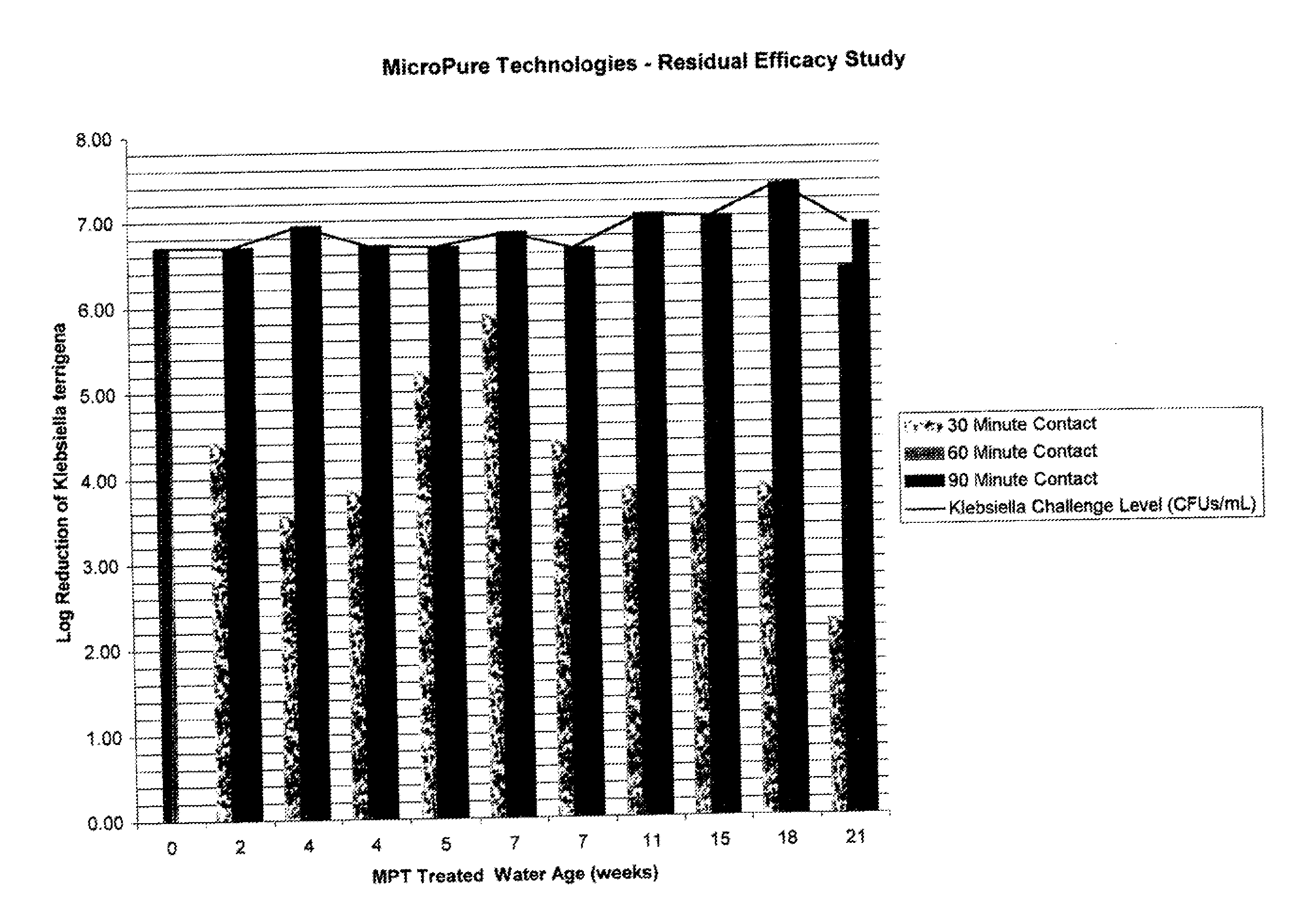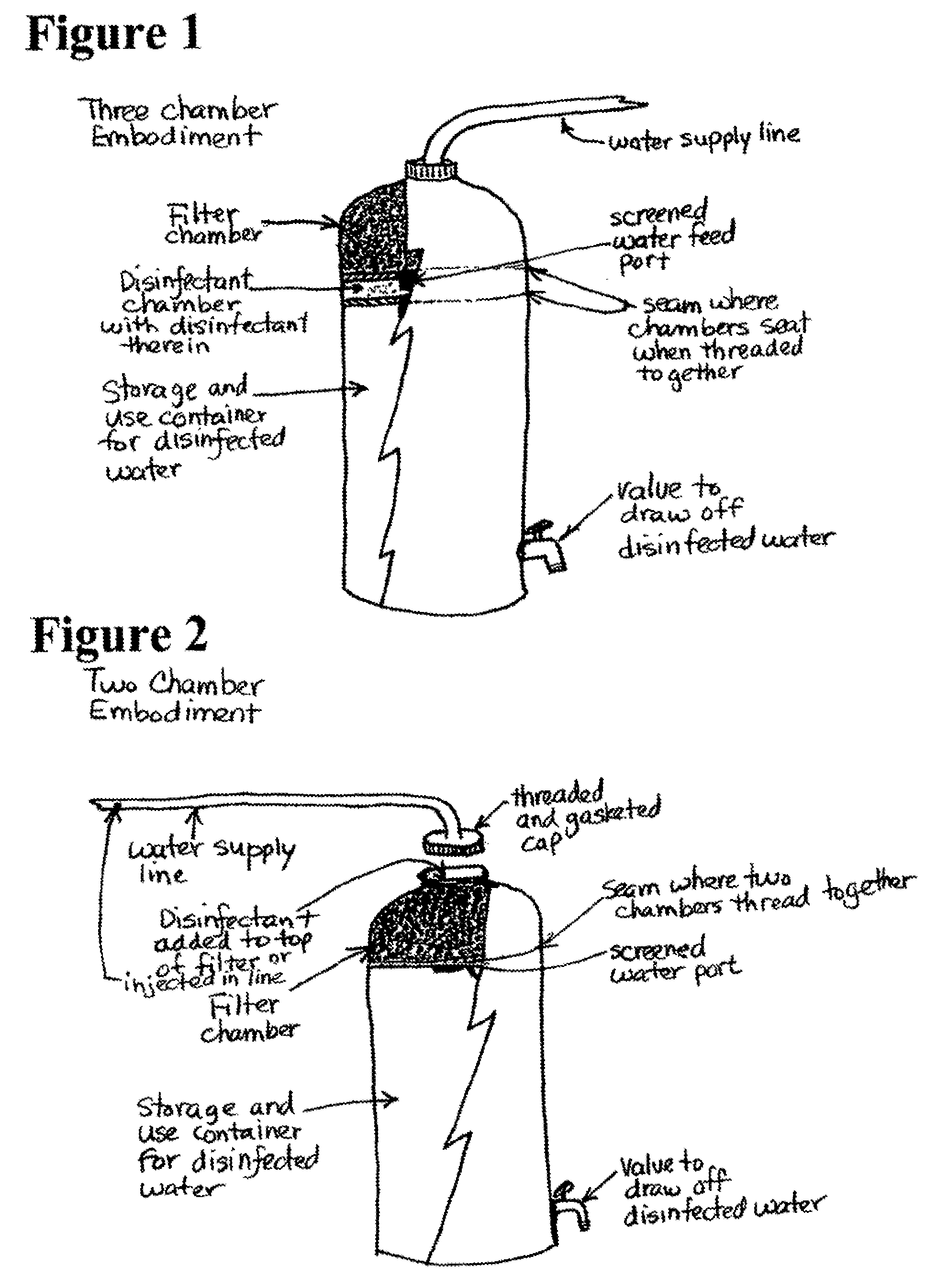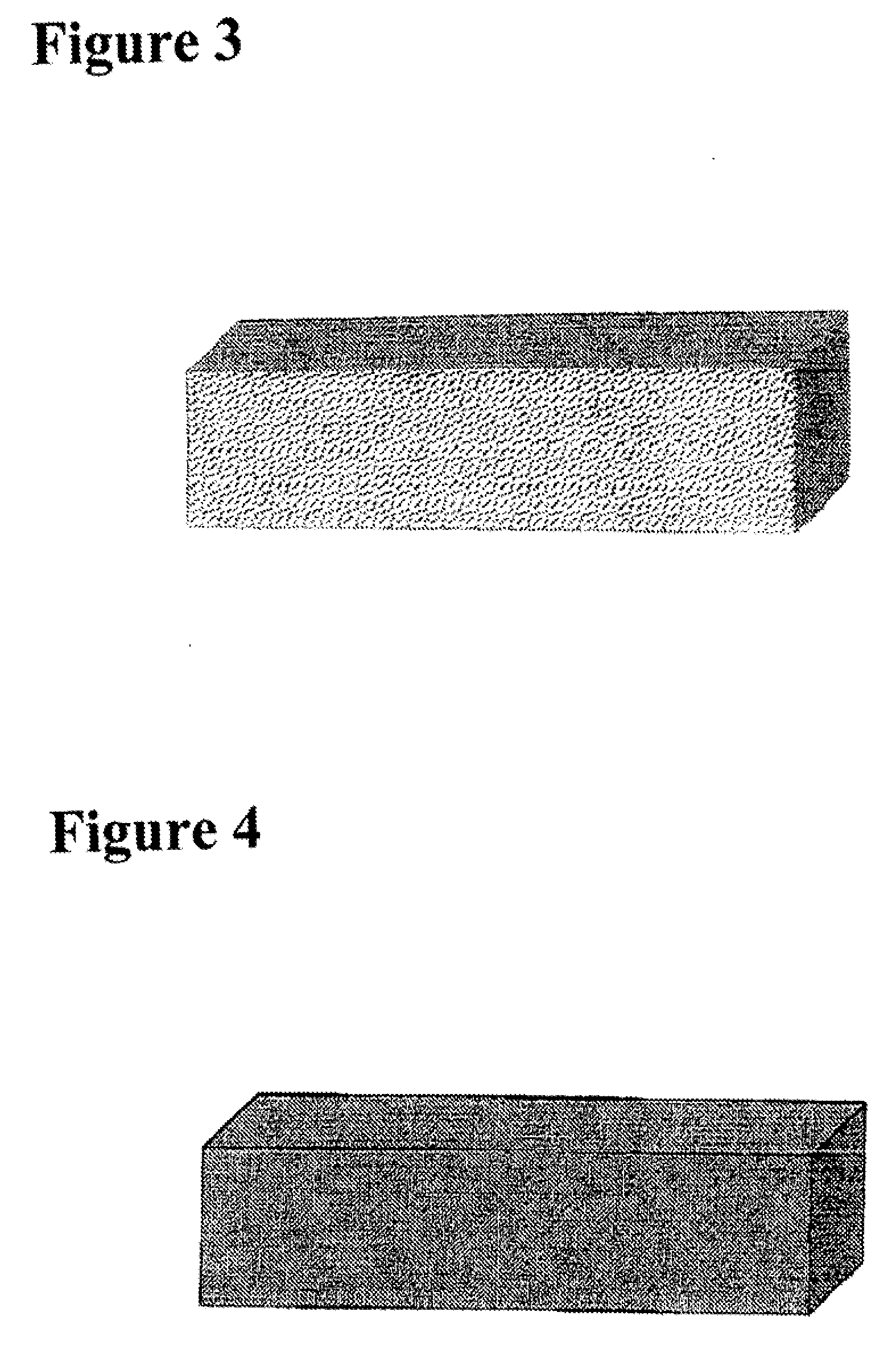The most significant drawbacks to the use of
chlorine as a
disinfectant is the formation of disinfection by-products (DBPs), some of which are toxic and suspected carcinogens.
This limits the use of
chlorine and / or mandates additional treatment to reduce DBP formation.
In addition,
chlorine's effectiveness can be limited by the physical and / or chemical characteristics of the water sought to be purified.
Such limiting factors of chlorine's purification effectiveness include the water's temperature, pH, presence of organic carbon, dissolved organic and inorganic matter, and
turbidity.
The use of chlorine as a
disinfectant also has aesthetic taste and
odor concerns as well as safety issues associated with handling the chlorine.
Many of the alternative technologies currently recognized by the EPA in its Alternative Disinfectants and Oxidants Guidance Manual have limitations for widespread use for drinking
water disinfection.
In addition, many of the alternatives still result in DBP and / or inorganic byproduct formation.
With the exception of
chlorine dioxide and monochloramine, none of these alternative disinfectants provide residual disinfection in a
distribution system or container and therefore typically require the supplemental use of some form of chlorine.
Alternatives to chlorine, such as ions,
permanganate, chloramines and
ozone /
peroxide typically fail to achieve more than a 2-log inactivation of viruses.
In some cases these alternative disinfectants provide no measurable inactivation of viruses, particularly in high
turbidity, high
organic content waters.
The use of
iodine is recommended by the CDC only for short-term emergency use and has significant adverse taste and aesthetic drawbacks.
While size exclusion and
ultraviolet light based systems provide essentially immediate removal or inactivation of certain microbes, they do not provide any residual disinfectant to prevent regrowth of organisms.
Size exclusion based methods are typically ineffective on removing viruses as well as some of the smaller
bacteria and are impacted by limitations of
throughput due to filter plugging.
While use of
metal ions either alone, in combinations with other ions, or in combination with other substances such as free chlorine and
hydrogen peroxide, has met with some success in bacterial inactivation in certain water types, no combination reported in the scientific literature has proven consistently effective on inactivation of viruses on a wide range of test waters even after extended contact times incorporating hours or even days.
Copper ions alone were not as effective and yielded reductions of less than 3 log and 5 log after 60 and 240 minutes of
contact time, respectively, on seeded municipal water.
Therefore, use of
copper and / or silver ions alone was judged to be unsatisfactory for disinfection of viruses.
In summary, ions alone, whether used individually or in combination, do not provide acceptable disinfection of municipal or untreated natural waters such as water from rivers, streams, brooks, ponds, lakes, springs or wells for both
bacteria and viruses.
Alone—The use of Citricidal.™. alone, whether dissolved in a water or glycerin base, yielded inconsistent performances on waters seeded with
Klebsiella.
Citricidal.™. was typically completely ineffective on MS2
virus, with no reductions being observed on seeded municipal water or seeded untreated natural waters such as water from rivers, streams, brooks, ponds, lakes, springs or wells even after 24 hours of contact.
In summary,
plant extract (i.e. Citricidal.™. alone), does not provide acceptable disinfection of municipal or untreated natural waters such as water from rivers, streams, brooks, ponds, lakes, springs or wells for both bacteria and viruses.
Metal Ions and Glycerin (
alcohol) Combined—The use of
copper and silver ions in conjunction with glycerin yielded inconsistent performances on water seeded with
Klebsiella.
In summary, a combination of ions and glycerin does not provide acceptable disinfection of municipal or untreated natural waters such as water from rivers, streams, brooks, ponds, lakes, springs or wells for both bacteria and viruses.
However, previous efforts have failed to develop any
copper / silver combination disinfectants that have been demonstrated to achieve acceptable inactivation of both bacteria and viruses within short contact times. Some relevant research is briefly reviewed below.
The authors concluded that (as applied) copper and silver in water may not provide a reliable alternative to high levels of FC for disinfection of viral pathogens.
For bacteria, they reported that the
hydrogen peroxide was less effective than silver ions, which was less effective than the combination of H.sub.2O.sub.2 and silver ions, which was less effective than H.sub.2O.sub.2 plus copper ions.
However, the authors concluded that the combined disinfectant achieved unacceptable
viral inactivation.
As can be seen from the above cited research, while the use of copper and silver ions, either alone or in combination with other substances, has met with success on bacterial inactivation, no combination has proven effective within short contact times on viruses on a wide range of test waters.
None of these prior art patents teach the use of combining EPA potable concentrations of
plant extracts, alcohols and metal ions for the disinfection of water of bacteria,
algae, protozoans,
virus and fingi in water that has an effective kill rate that renders a previously
contaminated water source potable in a matter of minutes or hours and that provides disinfectant residual that remains effective for killing or inactivating bacteria and viruses for months or years while not forming disinfection byproducts.
 Login to View More
Login to View More 


